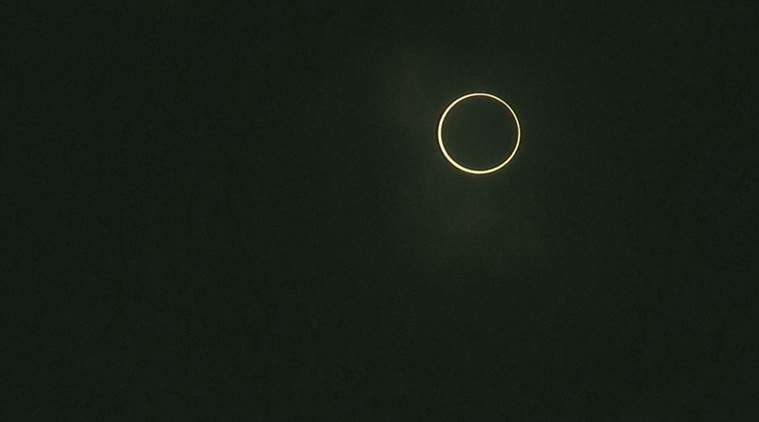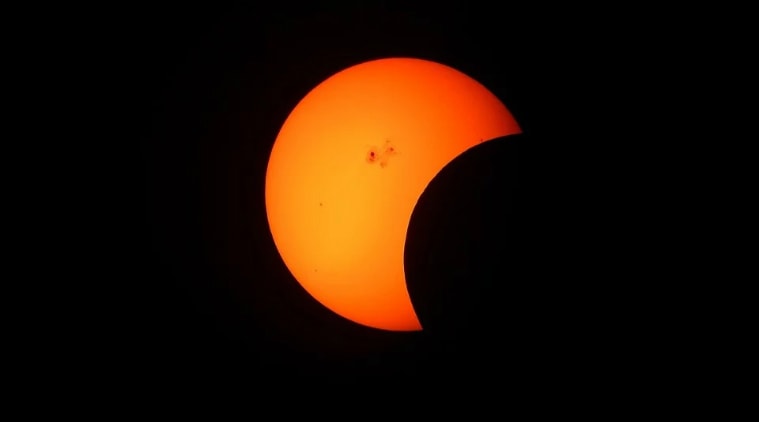Solar Eclipses of 2020: Dates, timings and where to watch Surya Grahan next year
Solar Eclipse of 2020 Dates, Timings, How to watch Surya Grahan next year in India: The year 2020 will have a total of six eclipses out of which two will be solar eclipses. Here are the dates, timings, locations of solar eclipses in the upcoming year.
 Solar Eclipse 2020: Date, timing, and location of upcoming solar eclipses.
Solar Eclipse 2020: Date, timing, and location of upcoming solar eclipses.
Solar Eclipse of 2020 Dates, Timings, How to watch Surya Grahan next year in India: A solar eclipse is defined as the event when the Moon comes between the Sun and the Earth, casting a shadow over a region of the planet. Depending on the area of Sun blocked by the Moon, solar eclipses are classified accordingly. Every year, multiple solar eclipses are witnessed in different regions of the planet. As we are about to witness the final solar eclipse of the year on December 26, let’s have a look at the future solar eclipses that will occur next year in 2020.
Solar Eclipse 2019 LIVE UPDATES
An eclipse never comes alone and there are usually two eclipses in a row. A solar eclipse occurs about two weeks before or after a lunar eclipse. According to timeanddate.com, there will be a total of six eclipses in 2020 out of which four are lunar eclipses and two are solar eclipses.
Eclipses of 2020
The first eclipse of the year 2020 will be a lunar one that will occur in January. It will be followed by another lunar eclipse in June and the same month will see the first solar eclipse of 2020. After this, there will be two lunar eclipses scheduled in July and November followed by the second and final solar eclipse of 2020 in December.
 The upcoming solar eclipse of 2020 will occur in June and December. (Image: Pixabay/skeeze)
The upcoming solar eclipse of 2020 will occur in June and December. (Image: Pixabay/skeeze)
Solar Eclipse June 21, 2020
As per dateandtime.com, the first solar eclipse of the year 2020 will fall on June 21 starting from 9:15 am to 3:04 pm. The full eclipse will start from 10:17 am to 2:02 pm where 12:10 pm will see the maximum eclipse.
Explained: What is Annular Solar Eclipse
The June 21 event will be an annular solar eclipse where the Moon will cover the Sun from the centre leaving the outer rim visible, thus creating a ring of fire. The event will be visible in much of Asia, Africa, Pacific and the Indian Ocean. Parts of Europe and Australia will also witness the upcoming solar eclipse in 2020.
Solar Eclipse December 14, 2020
The second and last solar eclipse of the year 2020 will occur on December 14. As per dateandtime.com, the solar eclipse will start at 7:03 pm and reach the full eclipse by 8:02 pm. The maximum eclipse will be at 9:43 pm, following which the full eclipse will end at 11:24 pm. The partial eclipse will begin afterwards and by 12:23 am on December 15, it will end as well.
Solar Eclipse 2019 happening: Timing, Places that witnesses the eclipse, How to watch live
The December 14 event will be a total eclipse where the Moon completely blocks the Sun and casts a shadow over the planet. The celestial event will be visible directly from South America, Pacific, Atlantic, parts of Indian Ocean and Antarctica. Some parts of Africa will also witness the solar eclipse directly.







